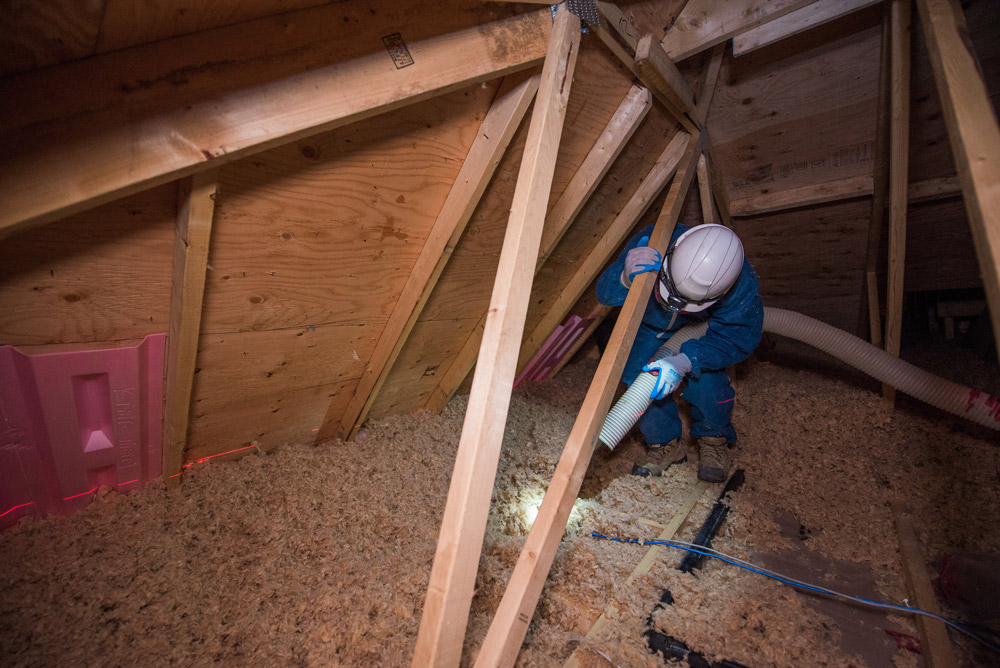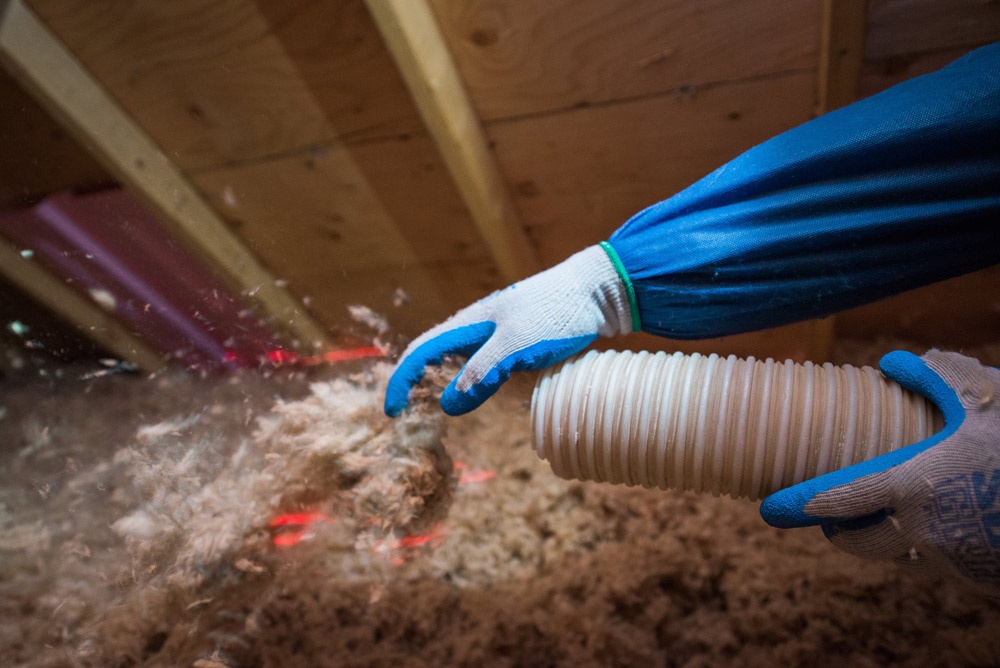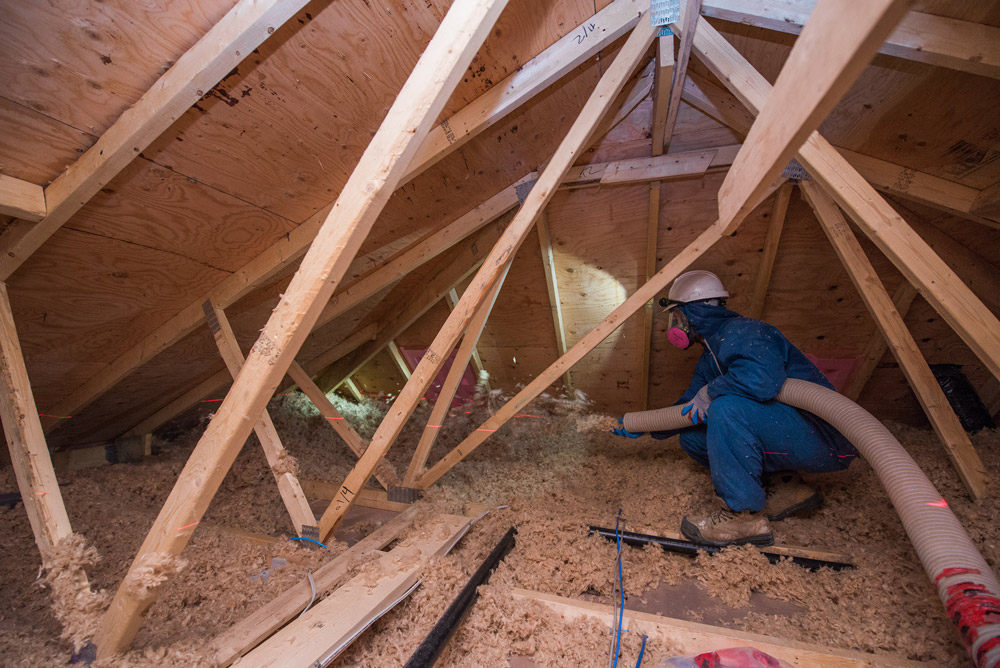Blown-in Insulation
Yvon Insulation proudly offers blown-in insulation products including blown-in fiberglass insulation and blown-in cellulose insulation. Blown-in insulation is one of the most effective products for areas such as attics to provide increased thermal performance. Heating and cooling costs can be slashed by up 30% per year by properly sealing and insulating the home. Insulating the attic should be top priority for preventing heat loss. As heat rises, a critical amount of heat loss from the living areas of the home occurs through an attic. During the summer months, heat trapped in the attic can reduce a home’s ability to keep cool, forcing occupants to further tax the home’s cooling system.
When our residential insulation team installs blown-in insulation in the walls or attics of your home, we thoroughly assess the location to determine the best way of air-tightening the space. By ensuring that all household spaces are kept air tight, we can effectively block outside weather from entering, and make sure that your heated or cooled air remains inside, exactly where it should be. In addition to blown-in insulation, our insulation contractors also ensure that the area of interest is properly ventilated in an attempt to keep dirt, allergens, and pollutants on the outside.
Blown-in insulation, whether it’s fiberglass or cellulose, is simply one of many products/services offered by Yvon Insulation. Below is an exhaustive list of our product/service offerings:
- Attic insulation
- Polyurethane spray foam insulation
- Basement blanket insulation
- Fiberglass sheet insulation
- Exterior insulation
- Ice damming
- Mold removal services
- Insulation removal
- Residential ceiling insulation
- Batt insulation
Blown-in Cellulose Insulation
The cellulose insulation we use is a blown-in cellulose insulation, made up of such recycled materials as newspapers, fiber products, as well as other environmentally green products. Blown-in cellulose insulation is chosen for its’ mold-resistant properties. Cellulose insulation is commonly blown into attics where, once applied, it prevents the build up of moisture, mold and mildew. The procedure of applying blown-in cellulose insulation involves:
- Drilling a small hole at the bottom of each wall cavity
- Blowing cellulose insulation through a flexible hose into the space






